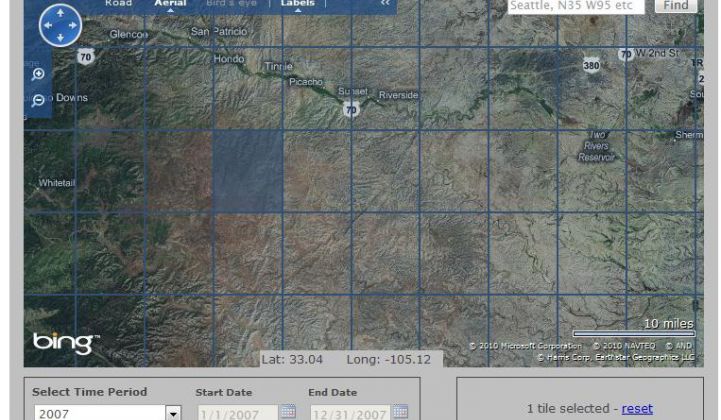Solar panels make fickle utility partners, with intermittent power output that sags and surges with every passing cloud, and all of it happening out of sight of utility grid monitoring systems. As utilities see more and more solar coming onto their grids, they’re going to need some pretty sophisticated modeling and forecasting tools to keep it from getting out of control.
Clean Power Research wants to help make that process a bit easier. On Tuesday, the Napa, Calif.-based company launched the latest version of its SolarAnywhere solar prediction tool, promising the ability to predict the minute-by-minute ebbs and flows of power from solar rooftops across entire regions, narrowed down to the square kilometer.
The Napa, Calif.-based company doesn’t actually pull minute-by-minute data, Jeff Ressler, the company’s president of software services, explained in an interview. Instead, it uses a combination of satellite imagery and solar installation data, along with patented methods to predict just how those systems will act in aggregate during the moments when hard data just isn’t available -- filling in the gaps between 15-minute satellite reads by predicting cloud drift, for example.
Tools like these will be important for utilities that lack insight into the growing share of distributed solar power coming onto their grids, and Clean Power Research is far from the only company trying to provide them. Utility-scale solar projects are instrumented in much the same way that power plants are, and solar installers such as SunEdison, SolarCity and HelioPower do their own monitoring and predictive analysis.
But otherwise, “The utility has very little information from direct connections to the PV systems out there, particularly from the residential systems,” Ressler said. “Any tools that can help the utility model, as a fleet, what those assembled systems are doing will be really important.”
Founded by solar researcher Thomas Hoff in 1998 as a software and consulting firm, Clean Power Research is privately financed, without venture capital or debt financing, Ressler said. It has been profitable for some time, based on contracts and grants from various partners, including the California Energy Commission, CAISO (PDF), Pacific Gas & Electric, Sacramento Municipal Utility District and others.
It got its start in economic valuation tools for solar companies, including its power bill and quote tools now used by solar companies including SunPower, Kyocera and Sharp, he said. The company’s PowerClerk tool, which manages utility solar incentive programs, serves as the back-end of some 60 programs around the country, including the California Solar Initiative, he added.
The solar prediction piece came out of a 2007 research project, using satellite irradiance data to gauge how productive solar panels would be amidst certain sunlight and weather conditions. The company has shown its software is accurate against real-world data collected in certain pilot projects, and the more advanced features for filling in gaps in time and data are covered under patents that recently received approval under the fast-track program for cleantech patents launched in 2010, Ressler said.
The most recent version of the software, besides narrowing the focus of the mapping from 10 square kilometers to 1 square kilometer, also allows users to collect any number of endpoints into arbitrary groupings, he noted -- in other words, combining sets of solar generation sources into virtual power plants, at least in terms of predicting how they interact with the grid at large.
Whether or not Clean Power Research’s predictive tools could be aligned with grid management systems to smooth out solar power’s fluctuations remains to be seen. Right now, the company is targeting both solar developers and utilities and grid operators, with an eye toward allowing the customer to incorporate the software’s predictions into load forecasting, power purchasing and solar development, Ressler said.



